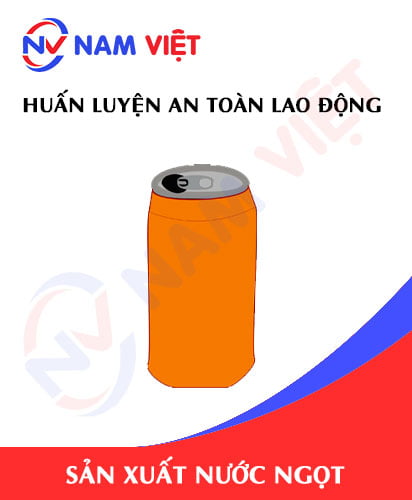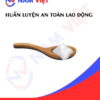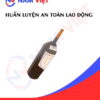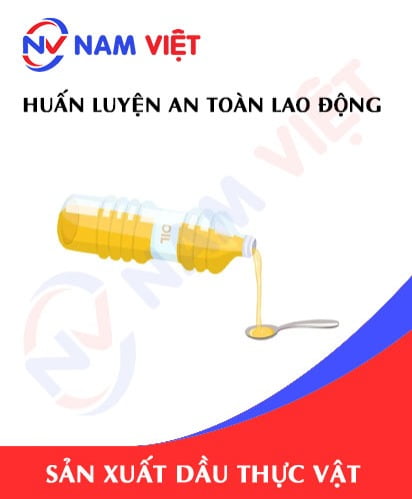Occupational Safety Training in Soft Drink Manufacturing
99,000 ₫
Note: The above price is calculated for one person, the price may fluctuate depending on the number of trainees participating in the course and the dynamics of the market. For more accurate price support, please refer to the quotation table or contact our consulting staff directly.
Occupational safety is an important issue in soft drink manufacturing factories and needs to be addressed promptly to ensure the health and safety of workers, as well as to enhance the reputation of businesses. The Occupational safety training course is one of the effective solutions to raise awareness of accident prevention for workers participating in soft drink production.
Table of Contents
Toggle1. Overview of Soft Drinks
a. What are soft drinks?
- Soft drinks, also called soft beverages, are non-alcoholic beverages usually made from water, sugar, and flavorings such as fruit flavors, bubble flavors, cola, lemon, grape, watermelon, and other flavors. Soft drinks can be carbonated or non-carbonated and are bottled or canned for retail or sold in bulk for use in stores, restaurants, and hotels.
- The soft drink manufacturing industry in Vietnam is currently developing strongly with the participation of many large and small enterprises. According to statistics from the Ho Chi Minh City Tax Department, the total number of enterprises registered to produce beverages (including soft drinks, refreshment drinks, bottled water, beer, and alcohol) exceeds 1,200 companies.
- Moreover, with the development of the tourism industry, the demand for soft drinks in hotels, resorts, restaurants, eateries, and cafes is also increasing, creating strong production and consumption demand for the soft drink manufacturing industry in Vietnam.

b. Soft drink manufacturing machinery
The types of machinery used in soft drink production include:
- Mixers: Used to blend the main ingredients such as sugar, water, and flavorings.
- Cooling machines: Used to chill the soft drink mixture.
- Foaming machines: Used to create bubbles in soft drinks and help the mixture become homogeneous.
- Bottling/packaging machines: Used to package the product into bottles or bags while ensuring hygiene.
- Juicers: Used to extract juice from fruits and vegetables, giving the product natural sweetness.
- Capping machines: Used to seal and preserve the product.
These machines are designed to ensure that the soft drink production process is safe, high-quality, and efficient.

c. Soft drink manufacturers in Vietnam
In Vietnam, there are many soft drink manufacturers, but the major companies dominating the market are:
- Suntory PepsiCo Vietnam Beverage: a joint venture between Suntory Group (Japan) and PepsiCo (USA). The company specializes in producing and distributing popular beverages such as Pepsi, 7Up, Mirinda, Sting, Aquafina, and Lipton Ice Tea.
- Coca-Cola Beverages Vietnam: a branch of The Coca-Cola Company (USA) in Vietnam. The company produces and distributes popular beverages such as Coca-Cola, Fanta, Sprite, Minute Maid, and Schweppes.
- Tan Hiep Phat Group: a multi-industry corporation with its main business in producing and distributing soft drinks. The company produces beverages such as Number 1, Dr. Thanh, Zero Degree, Dr. Smart, B’Fast, C2, and Ovaltine.
- Masan Consumer: a subsidiary of Masan Group operating in the food and beverage sector. Masan Consumer produces soft drinks such as Kokomi, Wake-up 247, Vinh Hao, and Long Thanh.
Additionally, there are smaller enterprises mainly focused on local markets.
d. Specific jobs in a soft drink manufacturing factory
Group 1
- Executive director, deputy executive director, department heads in a soft drink manufacturing factory.
Group 2
- Safety officers: manage safety in the factory, design safety procedures, supervise and enforce employees’ compliance with safe working processes.
Group 3
- Raw material processing: Ingredients typically include water, sugar, flavorings, colorings, and preservatives. Processing includes measuring, mixing, and treating to remove impurities.
- Blending: After processing raw materials, the components are blended to create soft drinks with the desired sweetness and flavor. This process is usually done by automated machines.
- Sanitation: The soft drink is transferred to a sanitation system to remove impurities and ensure food safety.
- Bottling or canning: After production and sanitation, the soft drink is bottled or canned for storage and distribution.
- Quality control: Factories usually have quality control departments to ensure products meet quality and food safety standards.
- Equipment management and maintenance: Machines and equipment in the factory must be properly maintained and operated to ensure efficiency and durability.
- Warehouse management: The factory manages inventory to ensure products are stored properly and meet market demand.
Group 4
- Office, service, sales, and marketing jobs.
- Production management, quality management, human resources, materials management, finance, and accounting.
- Research and development of new products, designing product packaging.

2. Overview of soft drink labor safety training course
In this article, we focus on Group 3 because Group 3 directly participates in the production process and faces the highest occupational safety risks. For other groups, refer here.
a. What is Group 3 labor safety training?
- Group 3 labor safety training consists of sessions that equip workers with awareness and skills to prevent workplace accidents.
- The training helps workers identify and avoid hazards, reducing the risk of accidents during work.
REGISTER FOR LABOR SAFETY TRAINING SERVICE
b. Training duration
Initial safety training
- Total training time is at least 24 hours, including testing time.
- 8 hours of theory on policies and labor safety regulations
- 8 hours of theory on basic labor safety knowledge
- 4 hours of theory on specialized training content
- 2 hours of practical training on specialized content
- 2 hours of theoretical final assessment
The training center divides the time into multiple sessions depending on employee scheduling. Typically, there are 6 sessions over 3 days if the enterprise allows continuous learning.
Periodic safety training
- Before the labor safety card expires, employees wishing to renew it must complete a periodic labor safety training course, with periodic training duration at least 50% of the initial training duration.
Explanation: the total periodic labor safety training duration is at least 12 hours, including testing. After completing the periodic course and passing the assessment, workers are issued a renewed labor safety card.
c. Training content
| No. | TRAINING CONTENT | TRAINING DURATION (HOURS) | |||
| Total | Including | ||||
| Theory | Practical | Test | |||
| I | Labor safety policies and regulations | 8 | 8 | 0 | 0 |
| 1 | Overview of labor safety and hygiene legal documents. | 6 | 6 | ||
| 2 | System of technical safety and hygiene standards and regulations. | 1 | 1 | ||
| 3 | Specific regulations by state authorities on safety when constructing, expanding, or renovating facilities for production, storage, or inspection of equipment and hazardous materials. | 1 | 1 | ||
| II | Basic labor safety knowledge | 8 | 8 | 0 | 0 |
| 1 | Basic knowledge of workplace hazards and harmful factors. | 4 | 4 | ||
| 2 | Methods to improve working conditions. | 1 | 1 | ||
| 3 | Safety culture in production and business. | 1 | 1 | ||
| 4 | Rights and obligations of employers and employees; labor safety policies; roles of safety network personnel. | 1 | 1 | ||
| 5 | Labor safety rules, signage, use of protective equipment, first aid skills, and occupational disease prevention. | 1 | 1 | ||
| III | Specialized training content | 6 | 4 | 2 | 0 |
| Comprehensive knowledge of machines, equipment, hazardous materials; risk analysis, safety management, and safe working procedures with equipment and hazardous substances. | 6 | 4 | 2 | ||
| IV | Final assessment of training | 2 | 2 | 0 | 0 |
| Total | 24 | 22 | 2 | ||
See more training content of the 6 groups
d. Labor safety card
After completing the labor safety training and passing the test, workers will be issued a labor safety card (commonly called Group 3 labor safety certificate).
The Group 3 card clearly shows the worker’s name, date of birth, job, and working environment, as well as training duration, red stamp, and signature confirming course completion.
According to the provisions in Clause 2 of Article 24 of Decree 44/2016/ND-CP, there are 2 cases:
- If the employer and employee have a labor contract, the employer must sign and stamp the safety card for the Group 3 worker after completing the training and passing the test.
- If the worker is freelance or seasonal without a labor contract, the training unit must sign and stamp the safety card after the worker completes the training and passes the test.

3. Identifying Hazards Affecting Workers in Soft Drink Manufacturing
Hazards that may affect workers in soft drink manufacturing include:
- Electrical hazards: Machinery used in soft drink manufacturing operates with electricity, creating risks of electric shock, fire, or explosions if not used correctly.
- Chemical hazards: Chemicals are used to create flavors, colors, and freshness in soft drinks. Improper use or storage of these chemicals can harm workers’ health.
- Food safety hazards: Soft drink production requires maintaining cleanliness, hygiene, and food safety to avoid bacterial contamination. Workers must follow food safety standards and procedures to ensure the final products are safe for consumers.
- Noise hazards: Soft drink manufacturing often involves large machines running continuously, producing high noise levels. Prolonged exposure can affect workers’ hearing and mental health.
- Temperature hazards: The manufacturing process uses high temperatures and pressures to ensure product quality. Without proper handling or protection, workers may suffer burns or other heat-related injuries.
4. Common Workplace Accidents in Soft Drink Manufacturing
Common workplace accidents in soft drink manufacturing may include:
- Machinery accidents: Equipment in soft drink factories such as conveyors, bottling machines, cutting machines, pressing machines, and packaging machines can be dangerous if not used properly or maintained regularly.
- Chemical accidents: Workers may be exposed to chemicals like phosphate salts, CO2, flavorings, colorants, additives, acids, etc., which can harm their health if mishandled.
- Physical accidents: During production, soft drinks are bottled, jarred, or packed. Handling these items may cause cuts, punctures, or other injuries to workers.
- Hand-foot-mouth disease accidents: This can occur if hygiene is not maintained, workers do not wear masks, or personal protective equipment is not used, leading to the spread of hand-foot-mouth disease among staff.
- Fire and explosion accidents: CO2 and other chemicals in soft drink manufacturing can cause fires or explosions, especially if not stored or handled safely.

5. Safety Measures When Participating in Soft Drink Manufacturing
Safety measures in soft drink manufacturing may include:
- Ensure food hygiene and safety: Maintain cleanliness in the factory and equipment, ensure raw materials meet food safety standards, and comply with relevant food production regulations.
- Train staff in occupational safety: Employees should be trained on potential hazards and risk mitigation. This includes training on equipment use, personal protective equipment, safe work methods, and emergency procedures.
- Use personal protective equipment (PPE): Employees must wear helmets, safety goggles, gloves, protective coats, masks, and safety shoes.
- Inspect and maintain equipment: Soft drink manufacturing equipment should be checked and maintained regularly to prevent incidents causing injuries or fatalities.
- Follow occupational safety regulations: Strictly comply with safety rules, including maintaining safe working areas, avoiding contact with moving machine parts, and not using unsafe materials during production.
- Ensure safe transport and storage: Soft drinks must be transported and stored under safe conditions to prevent damage.
- Periodically conduct workplace environment monitoring in the factory to collect and analyze harmful factors affecting workers, then adjust to reduce hazards and prevent occupational diseases.
6. Benefits of Occupational Safety Training in Soft Drink Manufacturing
An Toan Nam Viet provides the following benefits to businesses after completing occupational safety training in accordance with Decree 44/2016/ND – CP on Occupational Safety and Hygiene:
- Workers can identify potential hazards and take preventive measures to avoid workplace accidents.
- Businesses can implement risk prevention measures in production, operation, and maintenance processes.
- Minimizes costs associated with safety incidents.
- Uninterrupted production increases labor productivity and product quality.
- Ensures compliance with labor safety laws, reducing legal risks.
- Enhances credibility and professionalism, elevating the company’s brand.
An Toan Nam Viet training courses are designed to protect individuals from external hazards that could lead to injury or, in severe cases, death.
REGISTER FOR OCCUPATIONAL SAFETY TRAINING SERVICE
7. Customer Feedback After Completing Soft Drink Manufacturing Safety Training
An Toan Nam Viet has many years of experience supporting businesses across Vietnam, particularly in the southern provinces. This responsibility is highly valued, which is why our occupational safety training is increasingly professional. Positive feedback and suggestions from businesses have been a driving force for our growth. Below are testimonials from our partners.
Bac Nam E&C Construction Investment Joint Stock Company
“My first experience with An Toan Nam Viet impressed me due to the 24/7 support from their consulting team. The training class was organized quickly and conveniently for our company. Thank you for your excellent service!”
See more customer interviews after using the service from An Toan Nam Viet
8. An Toan Nam Viet Occupational Safety Training Capacity
An Toan Nam Viet is a reputable and high-quality occupational safety training center in Vietnam, conducting training continuously at manufacturing workshops, factories, or construction sites nationwide (all 63 provinces).
REGISTER FOR OCCUPATIONAL SAFETY TRAINING SERVICE
Licenses for occupational safety training
- An Toan Nam Viet has been inspected and certified by the Department of Safety under the Ministry of Labor, War Invalids and Social Affairs, confirming our eligibility for occupational safety and hygiene training, strengthening our capacity in occupational safety training.

Training Materials and Lessons
- Before use in Occupational Safety Training Courses, materials are reviewed to ensure accuracy and effectiveness.
- Teaching methods are standardized according to An Toan Nam Viet protocols, developed by occupational safety training experts to maximize learning outcomes.
Facilities
- Controlling classroom conditions improves teaching efficiency and learner knowledge retention.
- Our training facilities include spacious classrooms meeting standards for area, lighting, and training equipment.
9. Nationally Trusted Occupational Safety Training Center
At An Toan Nam Viet, we prioritize the professional training of occupational safety. Educating workers on self-protection equips them for safe livelihoods and contributes to national development.
We carefully prepare every detail, from tools and teaching equipment to manuals, audio, and lighting, ensuring effective training.
Our instructors are experts with years of experience and research in identifying workplace hazards across industries and preventive measures.
Lessons are practical, engaging, and easy for workers to understand. Knowledge is aligned with Decree 44/2016/ND-CP.
Workers learn hazard prevention methods and self-protection techniques, applicable in real work environments.
Our training center is a reputable, professional provider with the following advantages:
- Competitive training costs with guaranteed quality.
- Flexible training schedules aligned with company production.
- Fast certification procedures in compliance with legal regulations.
- Experienced instructors with extensive expertise.
- Controlled classrooms to enhance teaching efficiency and learner knowledge retention.
- Lessons tailored to occupational safety needs of businesses.
- Dedicated, professional service for accurate and prompt client support.

10. Additional Resources for Soft Drink Manufacturing Occupational Safety Training
- Soft Drink Occupational Safety Training Materials
- Occupational Safety Training Materials Set
- Occupational Safety Test Set
- Soft Drink Occupational Safety Quiz
- Soft Drink Occupational Safety Training Slides
11. Soft Drink Manufacturing Safety Training Activities
1 review for Occupational Safety Training in Soft Drink Manufacturing
No comments yet















namchinh.haiphong341
Dịch vụ tốt!!!